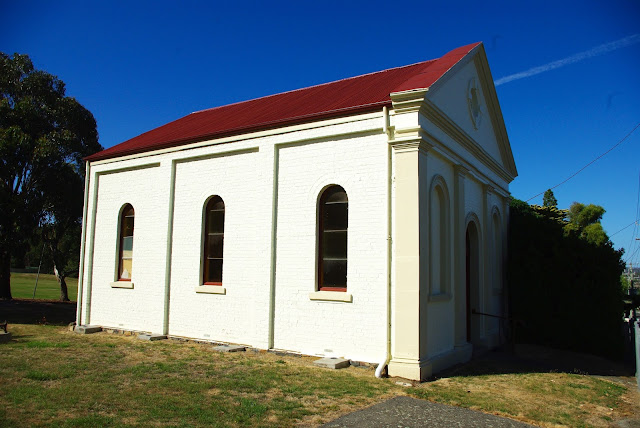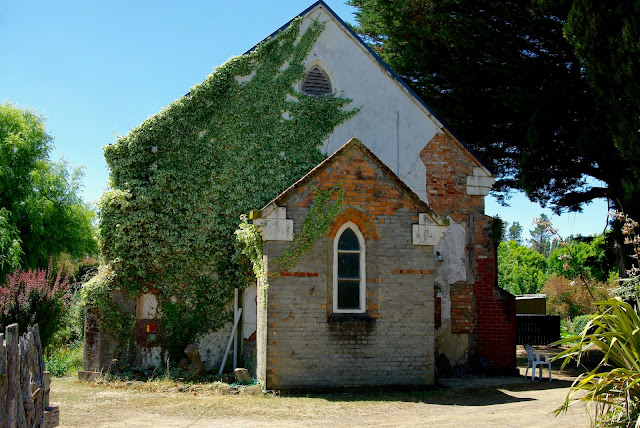No. 52 - Wesleyan Chapel St Leonards - One Chapel and Three Schools

St Leonards or Paterson Plains as it was once called, had been settled for some 20 years before a church was established. In 1846, the village's first church, a Wesleyan chapel was built. It was designed by William Archer, a son of the public figure Thomas Archer. At one time Presbyterian services were held in the Chapel with the permission of the Wesleyan Conference. It is no longer used as a chapel and is now part of the St Leonards Primary School complex. It seems remarkably well preserved as is its accompanying cemetery. The land on which the church was built is the gift of John Trethewie and he was amongst the first to be buried in the churchyard cemetery. Also buried here is William Walker Fox, Principal of Horton College, whose mysterious arched entrance is all that remains standing in an exposed field north of Ross. His daughter Mary, who was Headmistress of Launceston Methodist Ladies’ College (later to become part of Scotch Oakburn College) is also buried h...




